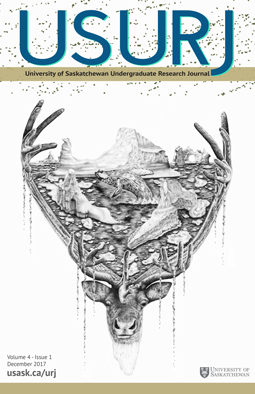Can a Greenhouse Be Established on Mars?
Main Article Content
Abstract
This study investigates the potential of establishing a greenhouse on Mars. In order to sustain a greenhouse on Mars, the variables that must be considered are water, soil, atmosphere, light, temperature, design, and plants. Water is present on Mars in the form of ice in frozen soil. Water extraction can be achieved by heating, microwaves, or humidifier type devices. The water that is extracted is highly salty. However, ion exchange, reverse osmosis, or biological treatments can be used to treat the water. By using an underground irrigation system, this water can be applied directly to plant roots. Soil is readily available on Mars, and, with the exception of reactive nitrogen, this soil contains the nutrients required for plant growth. Nitrogen fixers, such as Cyanobacteria, can convert nitrogen from the atmosphere into reactive nitrogen. This reactive nitrogen can be directly applied to the plants. The atmosphere of Mars contains 95.32% Carbon Dioxide, 2.7% Nitrogen, 1.6% Argon, 0.13% Oxygen and 0.08% Carbon Monoxide. Mars' atmosphere is very thin so it has difficulty capturing solar energy, but this difficulty can be overcome by creating more greenhouse gases on the planet via thawing the poles using orbital mirrors, creating greenhouse gas factories, or smashing ammonia heavy asteroids into the planet. Artificial light can also be used to supply solar energy. Temperatures on Mars fluctuate between 35 to - 90 degrees Celsius, depending on the season. To overcome these large fluctuations, a radioisotope heater can be used to maintain temperatures within the greenhouse between the ideal 0 - 40 degrees Celsius. Robots or humans can set up and maintain the greenhouse. Plants that are to be grown in a greenhouse on Mars must be able to sustain human life by providing the proper nutrients. These include soybeans, spinach, mushrooms, wheat, Spirulina platensis (cyanobacteria supplementation) and seaweed. Ultimately, this research suggests that building and maintaining a Martian greenhouse may be feasible in the future by utilizing a number of techniques and technologies.
Downloads
Article Details
Section
Articles: USURJ’s current Publication Agreements apply a Creative Commons Attribution-NonCommercial License (CC-BY-NC) by default. The CC BY-NC license lets others remix, tweak, and build upon work non-commercially. The author(s) can choose a different CC license, as outlined in https://creativecommons.org/about/cclicenses/. Please see the PDF for each article to determine what license is applied to that article. Author(s) can also request to reserve all copyright (All Rights Reserved). If there is no indication for articles published before September 2020, assume the author retains all rights beyond those necessary for publication by USURJ. All articles published after September 2020 will apply one of the aforementioned CC licenses. See the Publication Agreement under the Submission Preparation Checklist or Author Guidelines for more information. Artwork: All copyright for the original artwork remains with the artist unless they wish to apply a Creative Commons (CC) license to the artwork. Please see the PDF for each artwork to determine what license is applied to that artwork.
